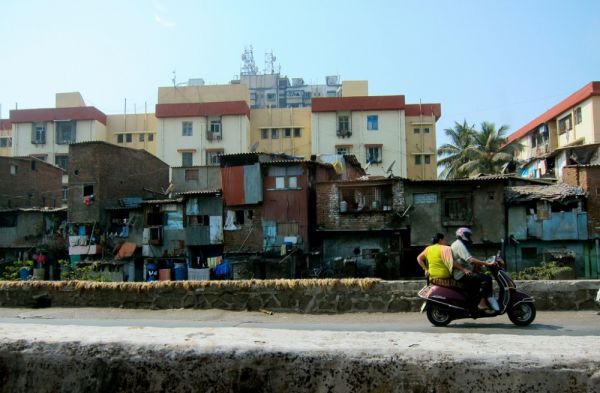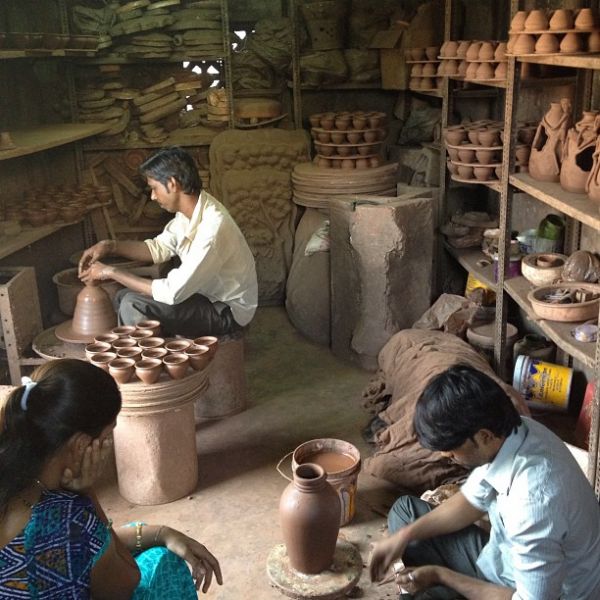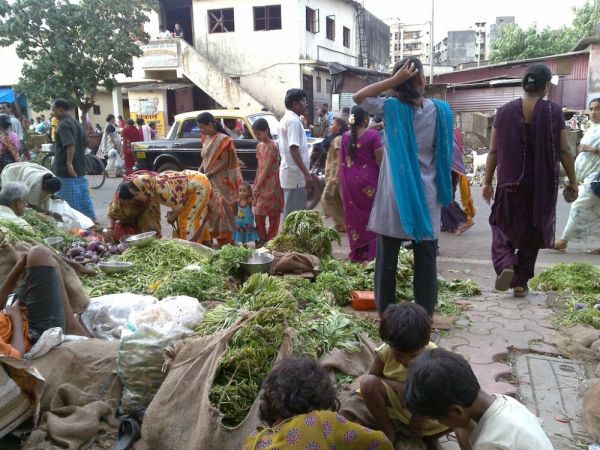The World Needs More Slums

Cruising through Dharavi, an upwardly mobile slum in Mumbai. Photo credit: Shack Dwellers International
In a guest blog post, Indian journalist Swaminathan S. Anklesaria Aiyar argues that, contrary to their reputation for squalor and crime, slums provide a critical low-cost way for the rural poor to access a better life in cities.
What constitutes the perfect city? It’s easy to make a list of utopian must-haves: Electricity and water round the clock; unpolluted air; plentiful road space for cars, bicycles and pedestrians; good educational and health facilities; lots of parks and museums. Those with an institutional mindset will argue for elected mayors with strong tax and administrative powers, giving them independence from callous state capitals.
No matter how desirable, such utopian longings fail to place cities in the context of a poor, rural society. Cities must not be elite islands in a rural sea of despond[dency]. They must provide income and social ladders for the poor and unskilled to climb up. Cities must be havens of opportunity for those without opportunity in rural and tribal settings.
This has an implication that will make many blanch — we must have more slums. These are the entry points of the poor into urban havens of opportunity. When urban land costs crores (millions) per plot, the poor can’t dream of buying land. Cities lack the funds for even basic facilities, let alone massive public housing. So rural migrants encroach on public land, creating shanty towns. These slums are eyesores — just looking at them makes urban folk shudder. Yet this should drive home to the elite how truly wretched rural India must be if poor people see more hope in filthy urban shanties than in the countryside.
Many visitors think the slums of Kolkata are hellholes. On the other hand, visitors are enthralled by the beauty of Naxalbari, full of green paddy fields, bamboo groves and ponds. Yet, invisible to the elite eye, conditions in Naxalbari were horrendous enough to spark a massive Maoist uprising in 1967 Many poor folk from Naxalbari migrated to Kolkata — for them, its supposed hellholes were refuges from rural oppression and a path to prosperity.

A pottery shop in Dharavi. Photo credit: Thomas Galvez
Some optimists think that the answer is to make rural areas prosperous. This is escapism. India has 160 million hectares of cultivable land for 1,250 million people, one-eighth of a hectare per person. Even if the urban share of the population doubles from today’s 30 percent to 60 percent, rural land availability will be just one-third of a hectare per person. This is a recipe for endless poverty, and cannot be fixed by endless subsidies. The rural poor know this and so migrate, but urban elites remain in denial. They want the poor to somehow remain rural and not inundate their cities. That is both callous and escapist.
Some people see slums as hubs of sub-human existence and humiliation. But it is necessary to see beyond the surface filth. Dharavi in Mumbai has long been called the world’s biggest slum, with 6 lakh (600,000) people crammed into 175 hectares of swamps. Far from being a hub of despair, it is now Mumbai’s biggest industrial center, humming with activity after all its famed textile mills have closed. Dharavi has 15,000 one-roomed factories, producing $600 million in goods and services.
SPARC, an NGO dealing with slums, describes Dharavi well. “Here you will find an astonishingly wide range of economic activity — from those who make idlis to potters to tanners to manufacturers of airline cutlery and crockery. In Dharavi, there is a place for everybody and there is always work to be found. There are workers who make only Rs. 300 ($5.50 USD) a month and there are a few entrepreneurs who even earn Rs. 300,000 ($5,500 USD) a month. Today, 21 children of Dharavi we know of are in medical college, and more than 40 doing engineering courses. Dharavi is inclusive and cosmopolitan, home to the poor and the better-off, and most people are self-employed. Dharavi stands as testimony to the sweat and toil of the poor and the pulsating energy of entrepreneurs.”
This is not a tale of despair and humiliation. It is an inspiring story of poor people who have risen through grit and determination, seizing urban opportunities. It’s another matter that the government has been woefully remiss in providing infrastructure and social services. But these are government failures everywhere, not just in slums.

Selling on the street in Mumbai’s largest slum. Photo credit: Mark Hillary
In the 19th century, Charles Dickens painted horrendous pictures of London’s slums, and American writers bemoaned the slums of New York. These writers failed to see that the fundamental dynamism of slums would in time convert shantytowns into prize real estate. Many Indians make the same mistake about our own slums.
Some prefer the Chinese route of bulldozing slums and forcing migrants to return to villages. But I agree with SPARC that slum redevelopment must be done in democratic consultation with slum-dwellers.
The government has failed to do much to uplift the poor, but slums have done so. Land reforms have failed widely to legally distribute land to the poor. But by simply allowing and often legalizing unauthorised encroachments, state governments have “distributed” land to millions of poor people. This is obviously far from ideal: Efficient, benevolent governments would have done the job much better. But since governments are neither efficient nor benevolent, this is a way forward.
Economist Hernando de Soto said the real problem of the poor was lack of legal title to their unauthorized plots. Without title, they fear demolition, lack the confidence to build pukka structures, and cannot mortgage their land to get loans. But in India, democracy ensures that governments rarely demolish shantytowns, and regularize many encroachments before every election. More land has been distributed to the poor through this route than through formal poverty alleviation schemes.
I am oversimplifying, of course. Many slum-dwellers have been moved to new sites far from their workplaces. In other cases slums are controlled by mafia slumlords. Nevertheless, slums have been dynamos of productivity, social mobility and poverty reduction.
So by all means, let us have structural reforms that yield better governed, better run cities. We need better roads, electricity and water supplies. But if cities are to perform their critical function of social mobility, we also need more slums like Dharavi. These should be improved, upgraded slums, but slums nevertheless.
Swaminathan S. Anklesaria Aiyar is a columnist, TV commentator and the author of the weekly column Swaminomics in the Times of India. He is the author of “Escape From The Benevolent Zookeepers — The Best Of Swaminomics” and has been the editor of India’s two biggest financial dailies, The Economic Times and Financial Express, and was also the India correspondent for The Economist for two decades. He has frequently been a consultant to the World Bank and Asian Development Bank. Visit him at Swaminomics.org to learn more.
This article was previously published elsewhere by the author.









